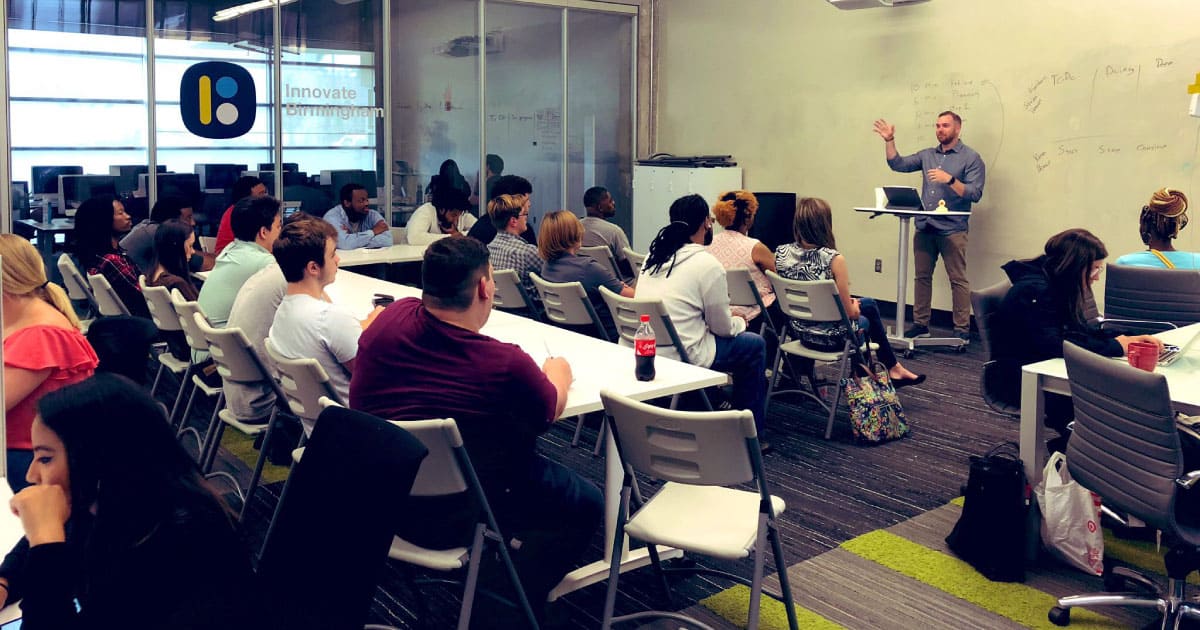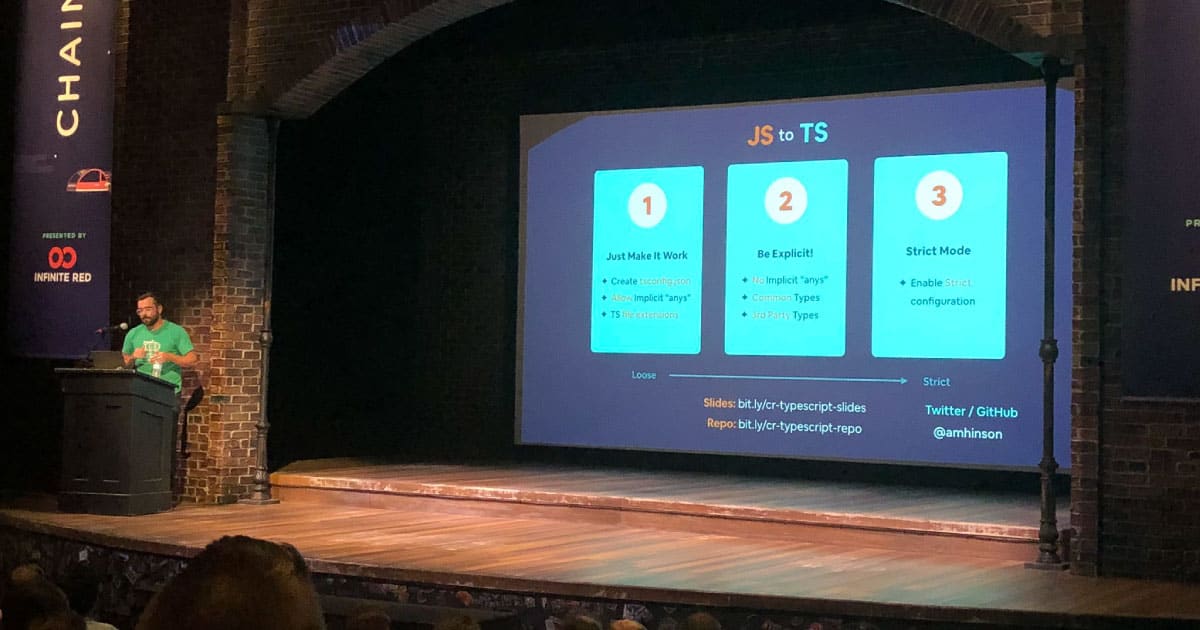Earlier this month (July 2019), Trent Kocurek spoke to the Innovate Bham class about what it's like ...
- Code (35)
- Tech (32)
- Leadership (27)
- Best Practice (21)
- UX Design (18)
- Airship News (14)
- Industry (14)
- Birmingham (11)
- Process (11)
- Products (11)
- Ruby (7)
- Tools (7)
- Hiring (6)
- React Native (5)
- Open Source (4)
- DEI (3)
- Maintenance (3)
- Uncategorized (3)
- Accessibility (2)
- Git (2)
- User Research (2)
- Mobile (1)
Alex Hinson presented the following as a Lightning Talk at the 2019 Chain React conference, which ...
Imagine this: You spend all your time working to design, develop, test, and deploy your application ...
Ah, the software development cycle. It's the basic principle of building custom software. ...
Why do companies invest in software? Often, it’s to either improve an inefficiency or seize an ...
On Thursday, March 28, Auburn University's Raymond J. Harbert College of Business kicked off its ...
UX maps can provide many helpful insights for your business, but as we've learned from Holly's ...
This is the second article in a 2-part series about UX Deliverables. If you’d like to read part 1, ...
This is part 1 of a two-part post regarding UX Deliverables. Part 2 coming soon. Originally posted ...
Last January, we released our first-ever Airship Chronicle - a look into our pursuit of excellence ...

Start with: What problem are you trying to solve?
One of the activities we work through revolves around refining your problem statement. A problem statement is the key business problem that needs to be solved. In software development, it states “what has to be done” for a project to succeed. It does not say, “how it has to be done.”
We use the 5W’s + 1 H format as well as the SMART Framework when establishing a problem statement. In fact, you can draft your own problem statement by using our free download. This download will get you thinking through some of the questions and answers prior to starting your project.



